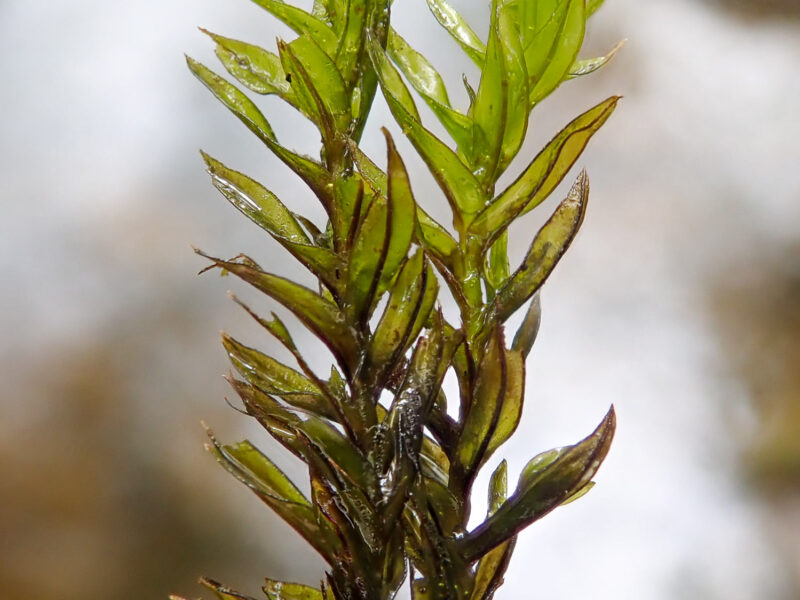Identification notes
Easy once you know it, but likely to make you doubt yourself when you find it in strange places (roof tiles, wall tops, gravestones…!). By far its favourite kind of habitat is on basic rock where water levels fluctuate seasonally. Many of the streams in the Yorkshire and Derbyshire Dales are black with it and in Ireland, it forms an extensive blackish line around the upper water level of the turloughs (seasonal lakes in limestone areas).
The first thing to check with this species is the leaf margin – you need to be sure that it is thickened rather than just recurved, as it can sometimes appear, then if you examine the leaf apex you’ll see that the costa is not excurrent, so you can then eliminate the only obvious common confounder – Dialytrichia mucronata, which has an excurrent costa and is nearly always a smaller plant. Beware the very rare C. riparius if you are in the Teme catchment in the Welsh borders though!
In areas of high rainfall, or even just where the local topography ensures constant high humidity, C. fontinaloides is happy to grow away from water, although its plants are often smaller than usual.
Read the Field Guide account

















